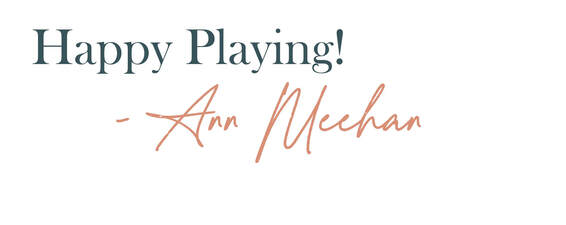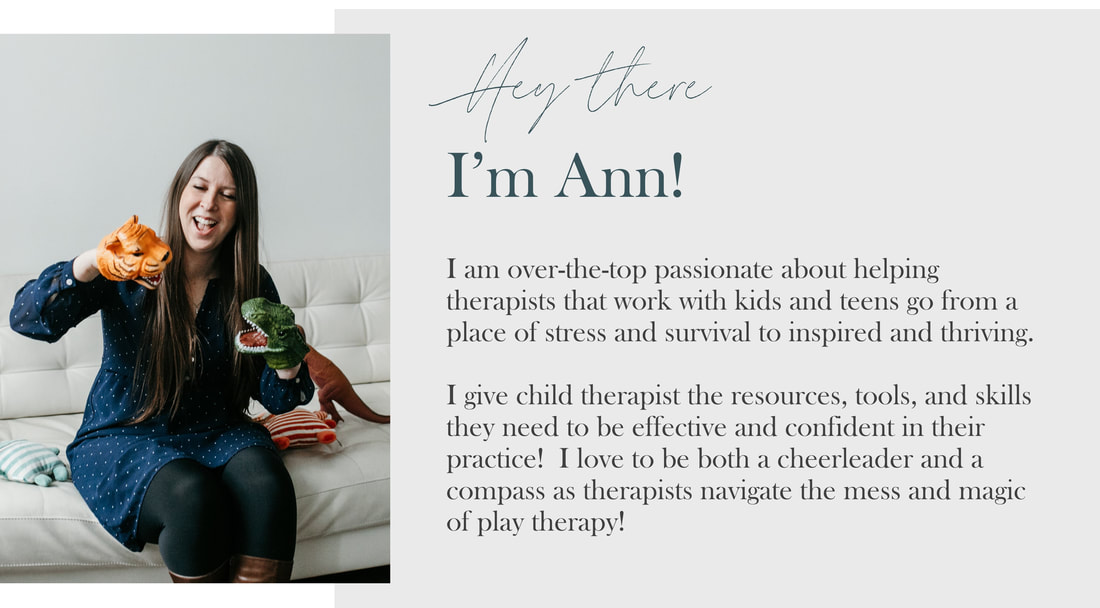|
The field of Play Therapy can be confusing. You might go to one training or read a text that says one thing, and get the totally opposite answer from another. We often get pulled in many directions that it can lead us to search for the “right” answers.
I wrote an article about the 5 Myths We Need to Leave Behind in Play Therapy that I was so excited about I couldn't wait to add 3 more to the list!
Teenagers Can’t Play
Sometimes Play Therapy gets categorized and put it in a box of theories and interventions for kids 10 and below. After you turn 10 *poof* no more toys, sand trays, songs, and art - let’s sit across from one another and talk! Well… it doesn’t really work like that. AND teens (and adults too) do some of the most transformation work through play, metaphors, and symbolic work. Now, does this mean that I am going to get on the floor with a 16 year old and do Child Centered Play Therapy work? Well most likely not (although not unheard of when we consider each individual child and emotional and cognitive developmental age). It doesn’t also mean that you will be all play all the time. Playing with teens, tweens, and adults might mean you spend more time on buy-in and selection of play activities that both help them move towards their goals AND are something they are willing to engage in. Playing Is A Way To Get Kids To Talk If you are juuuust dipping your toes into the Play Therapy world, it might make sense this way. I play a game of Uno with kids but then I can really ask them what is going on with their day, week, symptoms and skills. I mean talking is where the real work gets done, right? Or for clinicians who don’t have any training in Play Therapy it can be hard to see the value of play as a theoretical intervention. It can be incredibly difficult (like head-scratching-no-clue-what-you-are-talking-about difficult) to understand the complexities how the heck playing attack of the lava monster or setting up an elaborate scene in the dollhouse is a way to heal a child’s traumatic past and shift behaviors and emotions that pop up in the here and now. So for some therapists who work with kids who don’t engage in Play Therapy - playing Uno to lower defenses may have some value. That is IF they have a theoretical modality that is talk based. Here - the talking is what is the intervention. AND although it could be valuable it is not Play Therapy. With Play Therapy, the play (the specific ways children play, the structure the therapists sets, the materials that are available) is the intervention. It is the work, whether kids talk or not! Video Games Don't Belong In Play Therapy Prior to the pandemic I remember taking a training from Dr. Terry Kottman where she was talking about playing video games with her clients in the Playroom. And *BOOM* my mind was blown! And then I discovered the Association for Play Therapy hosted a conversation with many of the leading Play Therapists to get their hot take. Terry of course was on the side of pro-game but most agreed that certain conditions must be met such as making sure game play was happening within the relationship. And after of this? Well it completely changed my mind about video games and play! Since then our field has had an explosion of amazing therapists who are advocating and working in video game play to their practices such as Sophia Ansari LPCC, RPT at the Let's Play Therapy Institute, Dr. Rachel Altvater Psy.D, RPT-S, and Dr. Jessica Stone, PhD., RPT-S. Dr. Stone writes all about Digital Play therapy in her book HERE! So there you have it - 3 more myths I think we need to leave behind in our work with kids! What about you? What other myths do you wish we could use our magic wands to make disappear? Comment below! If you are looking for more support in your work with teens and tweens in the playroom check out my course Growing Out Of The Playroom: Teens and Tweens in Play Therapy! Loading...
0 Comments
Leave a Reply. |
Hi, there!I'm Ann Meehan, an LPCC, Loading... Archives
April 2024
Categories
All
|
Privacy Policies | Terms of Use | Disclaimer
Contact
ann@meehanmentalhealth.com | Copyright Meehan Mental Health Services 2022
Contact
ann@meehanmentalhealth.com | Copyright Meehan Mental Health Services 2022






